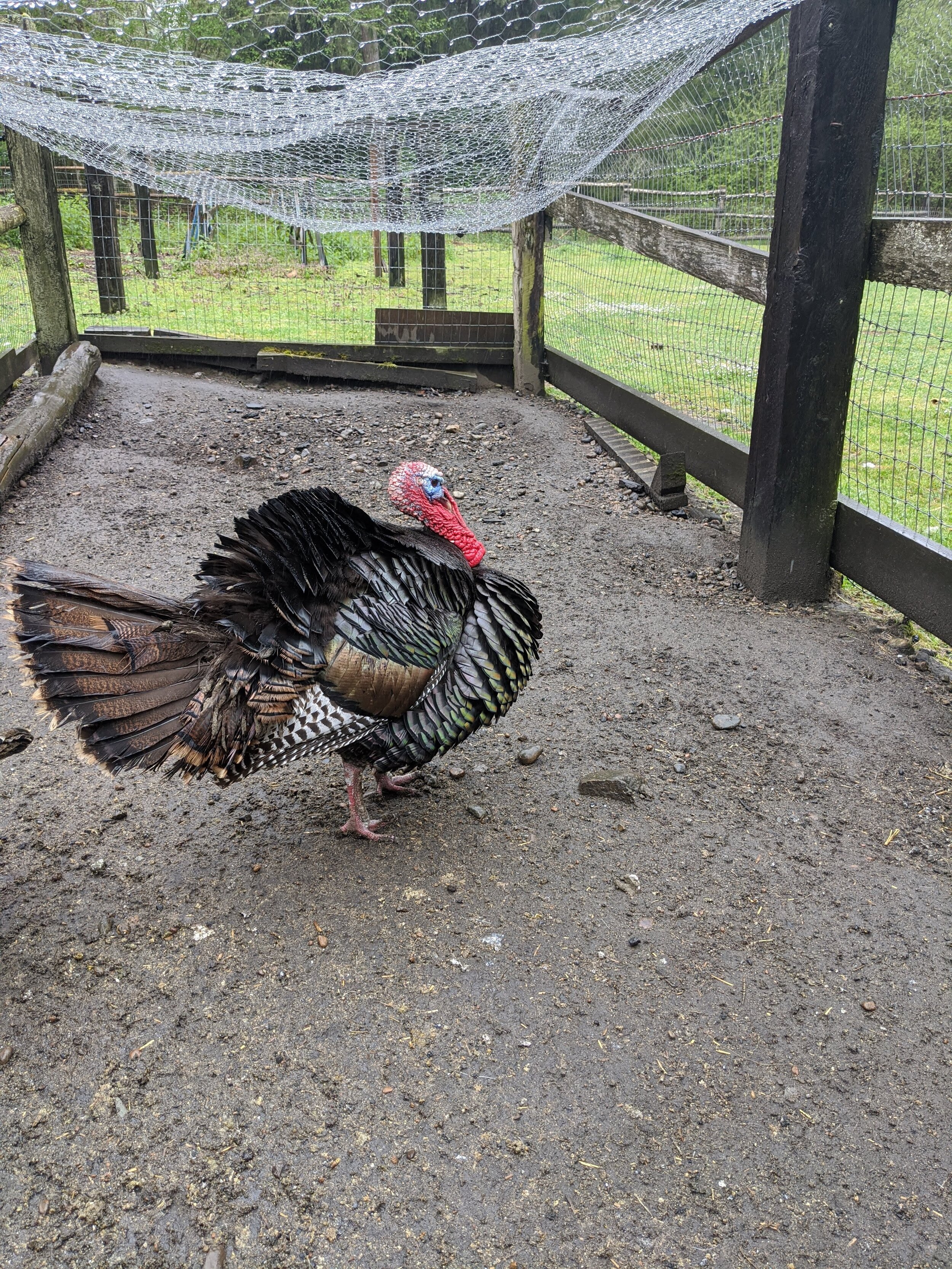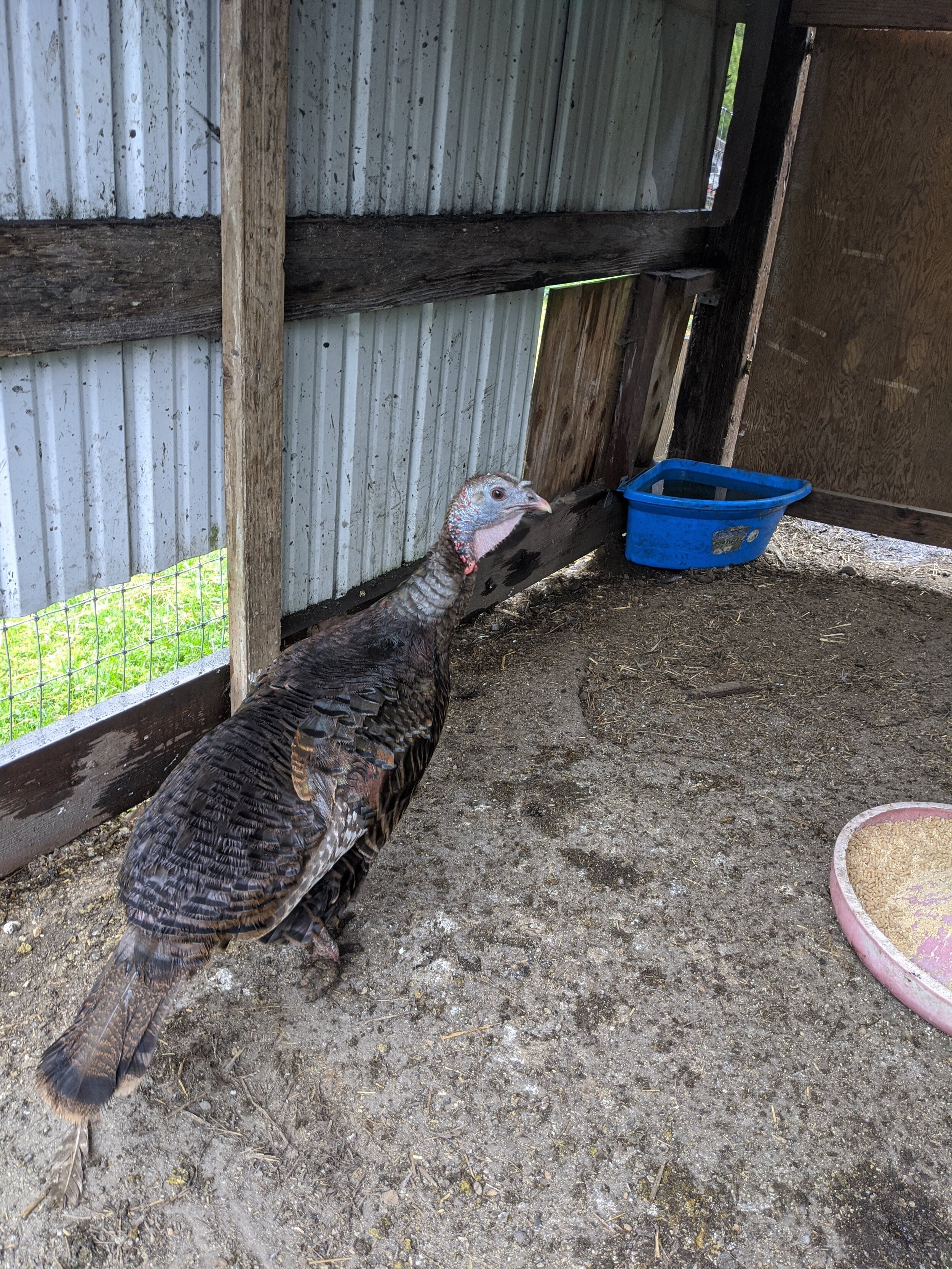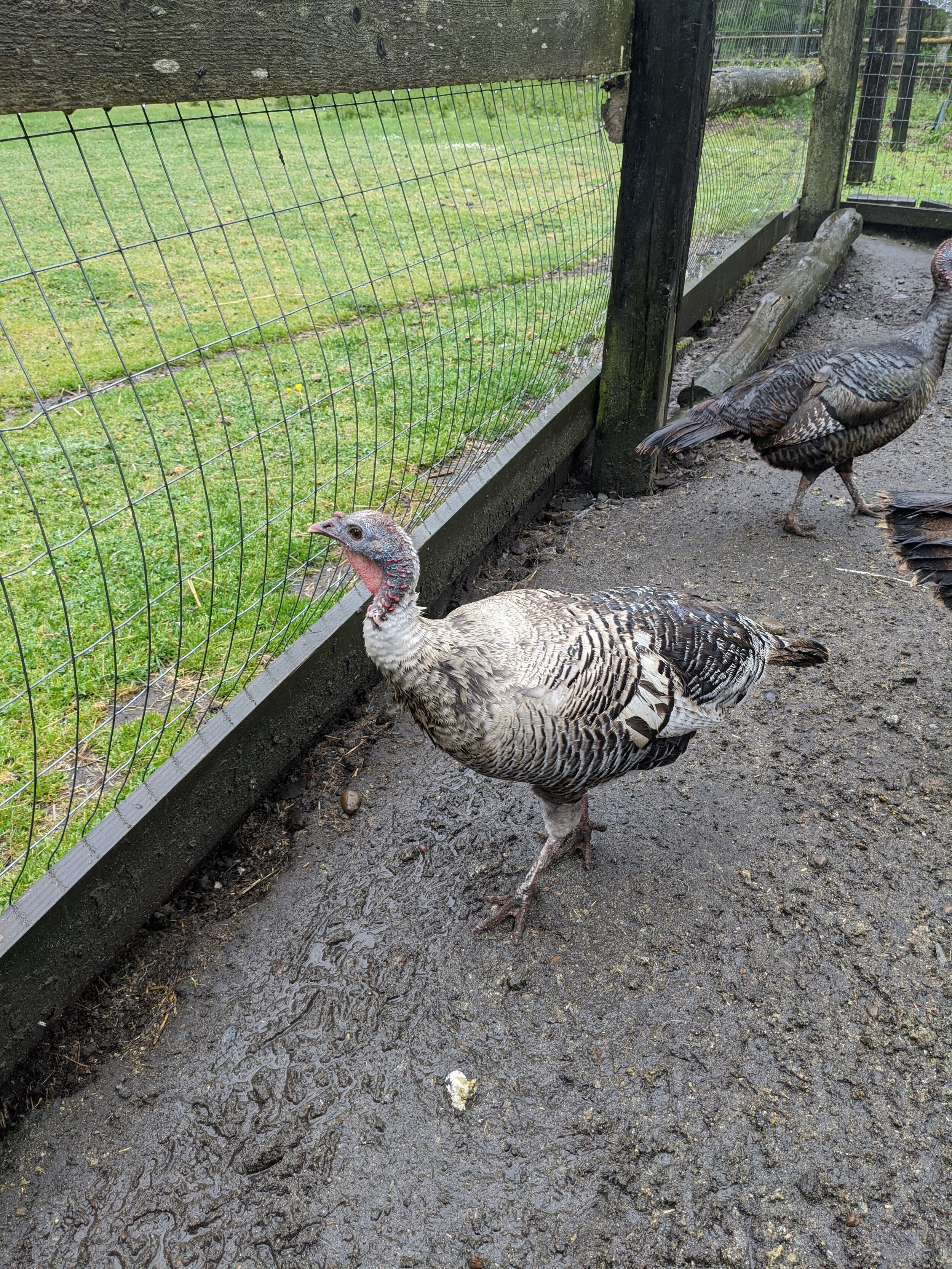Sound View Farm: Turkeys
/The final animal we have on the Sound View Farm is turkeys! We have one tom (male turkey also called a gobbler) and 3 hens (female turkeys)
Where do turkeys come from?
Aztec god in turkey form Photo: https://www.sciencealert.com/humans-weren-t-always-after-turkey-meat
Turkeys are native to North America. Evidence suggests that the Mayan people started domesticating the turkey around 2,000 years ago. There is also evidence of turkey domestication in Aztec sites in present day Mexico and among the Ancestral Pueblo Societies of present day Southwest United States. They were used for their feathers, bones, eggs, and meat. They also may have been worshiped and used symbolically. When turkeys were brought to Europe by the Spanish, Europeans thought it tasted like the African Guinea Fowl. The African Guinea Fowl was being brought to Europe through traders from the country Turkey. This confusion is probably how the North American Turkey got its name. Wild Turkeys were in danger of becoming extinct in the late 19th and early 20th century because of over hunting and habitat loss. Conservation and reintroduction efforts starting in the 1940’s help the Wild Turkey population to rise again. Now there are around 6 million turkeys in the wild.
Learn more about turkey pardoning here: https://obamawhitehouse.archives.gov/blog/2011/11/23/definitive-history-presidential-turkey-pardon
Photo: obamawhitehouse.archives.gov
Turkey Thanksgiving Traditions
While having turkey on Thanksgiving is a popular tradition now, turkey was most likely not on the menu for the first Thanksgiving meal between Pilgrims and Native Americans. The pardoning of a turkey for the holidays may date back to President Lincoln. Though many presidents have done it since then, the official start to the Thanksgiving turkey pardoning tradition was done by President George H.W. Bush in 1989. The National Turkey Federation say that about 88% of Americans eat turkey on Thanksgiving.
Photo: audubon.org
Other Turkey Facts
Both male and female turkeys have a wattle, the flap of skin under their chin, and a snood, the skin that hands over a turkey’s beak. These features are larger in males who use them to attract mates along with a show of their feathers. Though domestic turkeys are often to heavy to fly, wild turkey can fly short distances and will roost in a tree at night to stay safe from predators. Turkeys can run up to 25 miles per hour! Baby turkeys are called poults. Turkey eggs are edible and larger than chicken eggs. We don’t eat them as frequently as chicken eggs because turkeys lay eggs at a much slower rate than chickens. Some people think Benjamin Franklin wanted the turkey to be the national bird of the United States but he was just unhappy with the decision of the Bald Eagle because he believe they were birds of “bad moral character” and turkeys were “a much more respectable bird.”









